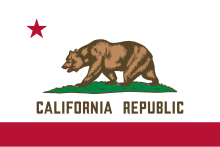
Back كاليفورنيو ARZ Californios (grupo étnico) Spanish Californio Basque Californios French Californio (gruppo etnico) Italian Californio's Dutch Califórnios Portuguese
 | |
| Total population | |
|---|---|
| 500,000+ | |
| Languages | |
| Californian Spanish (American Spanish, English (California English, Spanglish, Indigenous languages of California, Indigenous languages of Mexico | |
| Religion | |
| Predominantly Roman Catholic | |
| Related ethnic groups | |
| Other Hispanos and Mexican Americans of the United States: Floridanos, Tejanos, Nuevomexicanos Other Hispanic and Latino peoples: Mexican Americans, Chicanos, Mexicans, Spaniards, Indigenous Mexican American, Spanish Americans, Louisiana Criollos, Louisiana Isleños Other California Hispanics: Basque Californians |
| Part of a series on |
| Chicanos and Mexican Americans |
|---|
 |
| Part of a series on |
| Hispanic and Latino Americans |
|---|
Californios (singular Californio) are Hispanic Californians, especially those descended from Spanish settlers of the 17th through 19th centuries before California was annexed by the United States. California's Spanish-speaking community has resided there since 1683 and is made up of varying Spanish origins, including criollos, Mestizos, Indigenous Californian peoples, and small numbers of Mulatos.[1] Alongside the Tejanos of Texas and Neomexicanos of New Mexico and Colorado, Californios are part of the larger Spanish-American/Mexican-American/Hispano community of the United States, which has inhabited the American Southwest and the West Coast since the 16th century. Some may also identify as Chicanos, a term that came about in the 1940s.
The term Californio (historical, regional Spanish for 'Californian') was originally applied by and to the Spanish-speaking residents of Las Californias during the periods of Spanish California and Mexican California, between 1683 and 1848. The first Californios were the children of the early Spanish military expeditions into northern reaches of the Californias. Many of their fathers were soldiers who established the presidios of California and guarded the California mission system.[2]
Later, the primary cultural focus of the Californio population became the Vaquero tradition practiced by the landed gentry, who received large land grants and created the Rancho system.[3] In the 1820s–40s, American and European settlers increasingly migrated to Mexican California. Many married Californio women and became Mexican citizens, learning Spanish and often converting to Catholicism, the state religion. They are often also considered Californios, for their adherence to Californio language and culture.
In 2004 studies estimated that between 300,000 and 500,000 have ancestry descended from the Spanish and Mexican eras of California.[4]
- ^ as quoted in Clark, Donald T. (2008). Santa Cruz County Place Names p.442, Scotts Valley, California, Kestrel Press.
- ^ Hutchinson, C. A. (1969). Frontier settlement in Mexican California: The Híjar-Padrés colony and its origins, 1769–1835. New Haven: Yale University Press.
- ^ Griswold del Castillo, Richard. "Californios" in Encyclopedia of Latin American History and Culture, vol. 1, pp. 514-15. New York: Charles Scribner's Sons 1996.
- ^ Cite error: The named reference
sfgenealogywas invoked but never defined (see the help page).